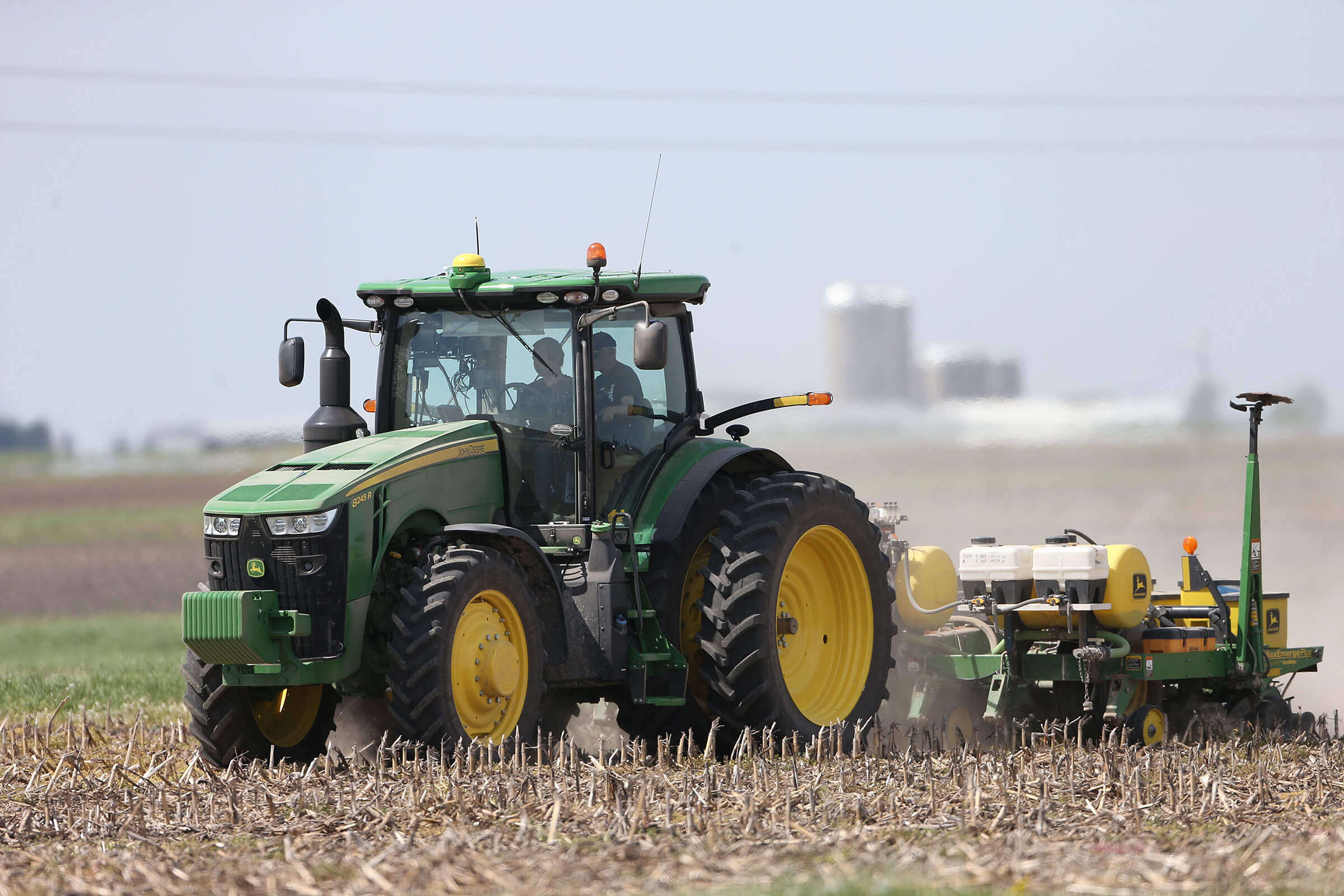As stewards of vast swaths of land, farmers are important allies in U.S. conservation efforts, but there is evidence to suggest those farming on rented land adopt conservation practices at a lower rate.
About 39 percent of U.S. farmland is rented, and 80 percent of those acres are owned by non-operating landowners (NOLs), or owners who do not farm the land they own. To shed light on the barriers to conservation on these lands, a team led by Pranay Ranjan, a postdoctoral researcher in Purdue University's Department of Forestry and Natural Resources, conducted in-depth interviews with NOLs, farm operators and managers, and university Extension personnel in Indiana, Illinois and Iowa. At 40.4 million acres, those three states have the highest proportion of rented farmland and the highest levels of nitrogen loss in the Mississippi River Basin.
Findings from The Nature Conservancy and Purdue team's findings, published in the journal Land Use Policy, identified barriers to conservation that existed in the NOL-farm operator relationship in five broad categories: barriers pertaining to cash-rent lease terms; barriers pertaining to the rental market dynamics; information deficit/asymmetry barriers; cognitive/interpersonal barriers; and barriers pertaining to NOL financial motivations
"Up until our study, there was no synthesis as to what the big-picture barriers were that we need to look at more closely," Ranjan said. "And while there were several, it appears that communication is the starting point to take care of many of these information deficits to create that level ground between the operator and the landowner."
The Nature Conservancy funded the research, which is already having an impact. Paper co-authors Linda S. Prokopy, a Purdue professor of forestry and natural resources, and Sheila M.W. Reddy, The Nature Conservancy's associate director of strategic initiatives, together with Paul Ferraro, Johns Hopkins University professor of business and engineering, are working to design and test new solutions to the identified barriers.
In addition to Ranjan, Prokopy and Reddy, other authors of the Land Use Policy paper include Chloe B. Wardropper of the University of Idaho's Department of Natural Resources and Society, Francis R. Eanes of Bates College's Department of Environmental Studies, and Seth C. Harden and Yuta J. Masuda of The Nature Conservancy.
Prokopy said that while there is no firm evidence the number of NOLs is growing, there is anecdotal evidence that is the case, making it important to better understand the dynamics at work and how they impact conservation decisions.
"When we work with farmers, we don't often find an information deficit when we try to promote conservation practices," she said. "We found that NOLs are a heterogeneous group compared with farmers, and it's not as clear what their information network is. Behaviors cannot change without awareness. If someone isn't aware of something, then nothing else can change. So addressing the information deficit as a first barrier has to happen before we can achieve anything else."
When it comes to financial considerations, a key barrier can be lease agreements, as they represent the link between landowner and farm operator.
"Most leases are one-year duration, but conservation practices can take three to five years to show benefits," Reddy said. "There is a total mismatch between the lease and operators' incentives to invest in the long-term health of the land because their lease is only short term."
Prokopy said that farm managers and others advise such short-term leases so that "landowners can renegotiate rent every year as a way to not be stuck with low rents if commodity prices go up."
And for NOLs, those financial considerations have real consequences that have to be addressed in order to promote conservation.
"For many older landowners, this is a very important source of income," Reddy said. "We are talking about people on a fixed income – they have medical bills, prescription drugs they need to be paying for. These type of financial needs can make it more difficult for a landowner to share the upfront costs of conservation practices with their farm operator."
Ranjan said the paper's authors had several recommendations to address lease barriers, such as encouraging NOLs to be more flexible with lease terms, offering multiyear leases to ease the insecurity felt by operators and incorporating proration into leases to safeguard operators' conservation investments should their lease be terminated.
"From the perspective of developing strategies, most conservation depends on some kind of human behavior," Reddy said. "Conservation science has historically been less focused on human behavior, decisions and social processes, and we are realizing that these are critical parts of our strategies and making conservation work. We really need to leverage social sciences to help us develop better strategies, and that's why work like this is so important."
 A Purdue-Nature Conservancy study examined barriers that lead those farming on rented land to adopt conservation practices at a lower rate than operators farming on land they own. The findings could lead to strategies to increase conservation practices, which could have a dramatic impact since roughly 39 percent of U.S. farmland is rented. (Purdue Agricultural Communication file photo)
A Purdue-Nature Conservancy study examined barriers that lead those farming on rented land to adopt conservation practices at a lower rate than operators farming on land they own. The findings could lead to strategies to increase conservation practices, which could have a dramatic impact since roughly 39 percent of U.S. farmland is rented. (Purdue Agricultural Communication file photo) 




